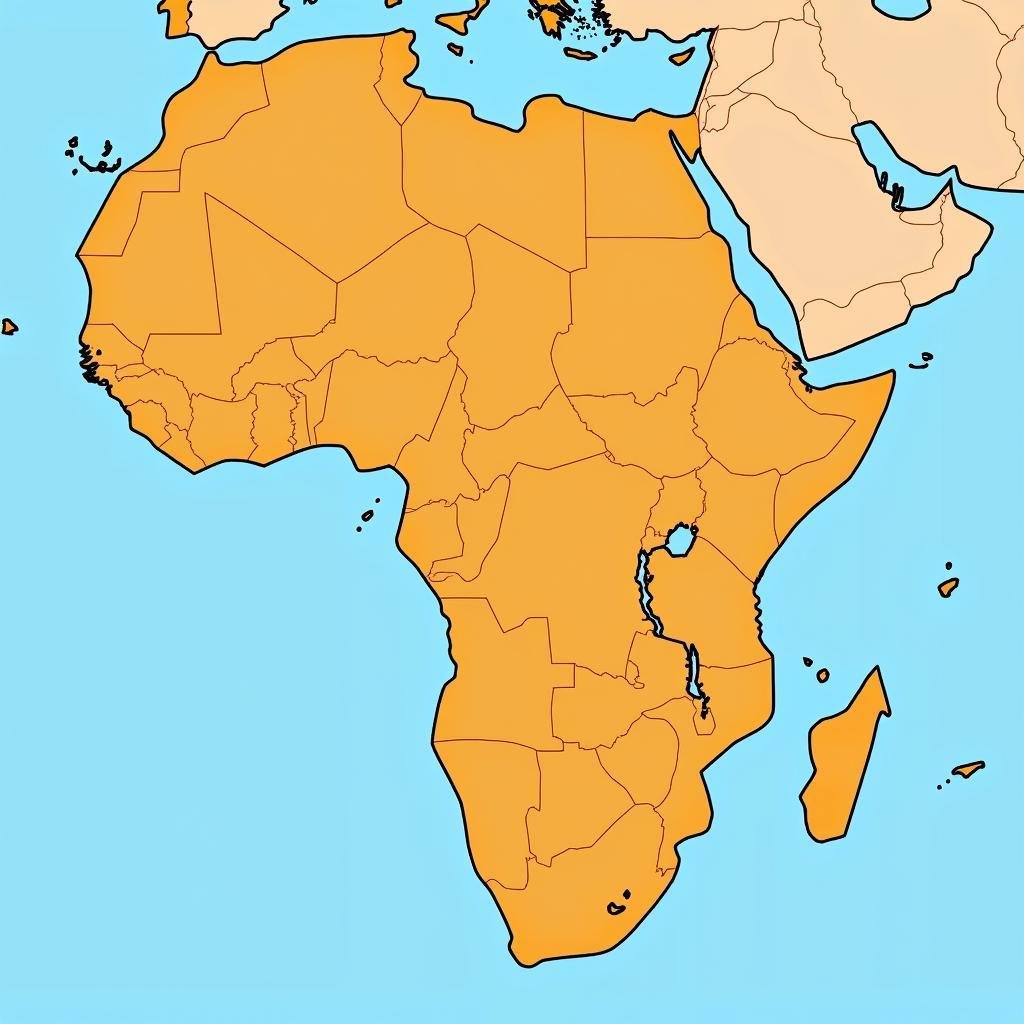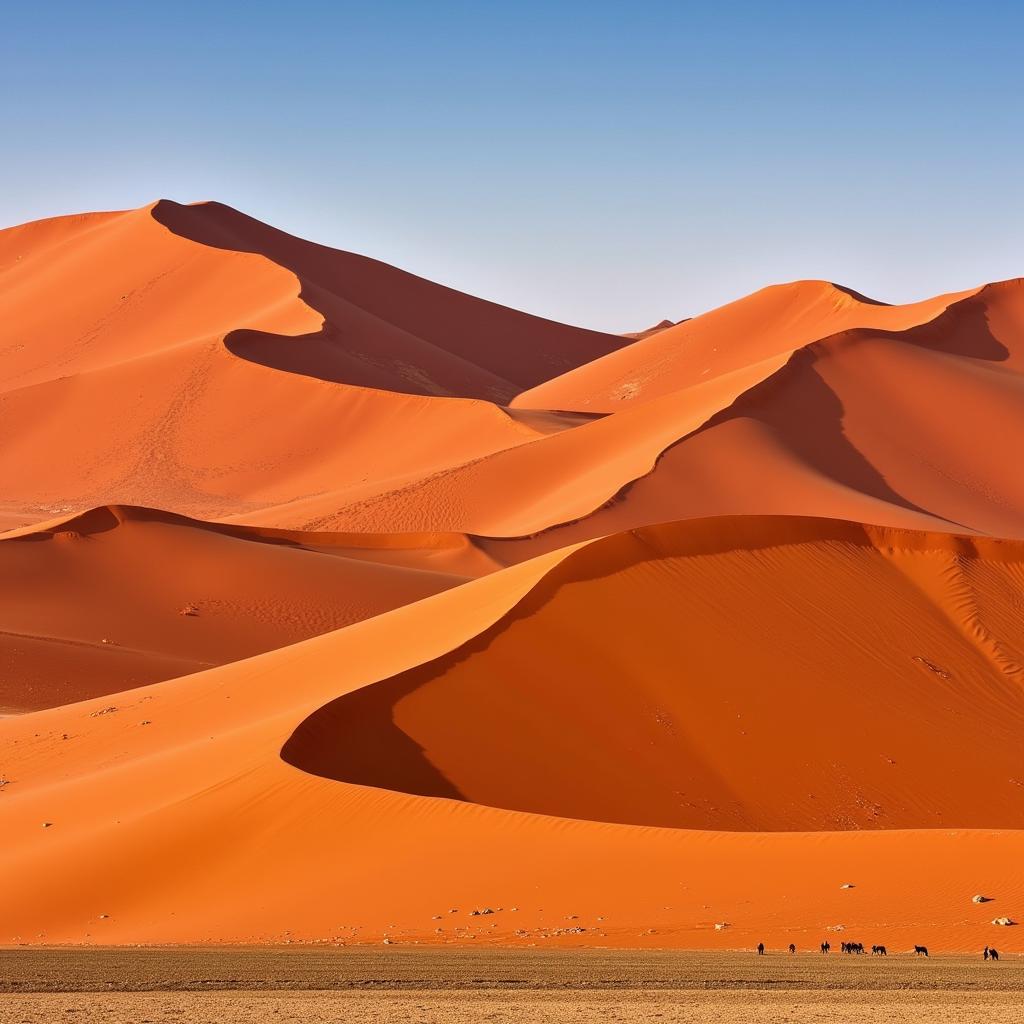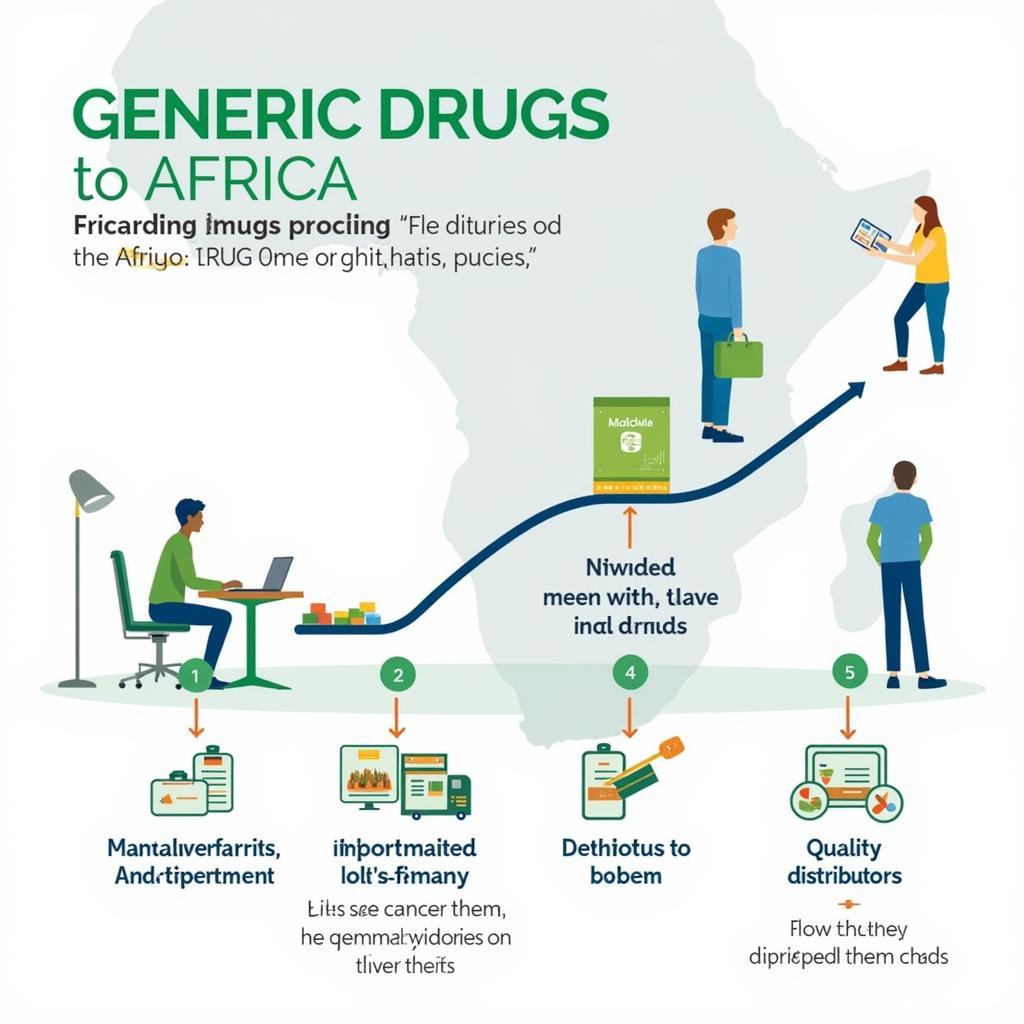Unraveling the Mystery: Which African Country Has a Desert on the World Map?
Africa, a continent of diverse landscapes, is often associated with vast savannas teeming with wildlife. However, did you know that Africa is also home to some of the world’s most expansive deserts? When we think of “african country having desert on world map,” one iconic landscape instantly comes to mind: the Sahara Desert. But is it limited to just one country? Let’s dive into the fascinating geography of Africa and uncover the truth.
Beyond the Sahara: Unveiling Africa’s Desert Nations
While the Sahara Desert dominates North Africa, it’s crucial to recognize that it stretches far beyond the borders of a single nation. In fact, the Sahara spans across a significant portion of the continent, encompassing parts of:
- Algeria: The largest country in Africa, Algeria boasts a significant portion of the Sahara within its borders. The Tassili n’Ajjer, a fascinating sandstone plateau, showcases ancient rock art and offers a glimpse into the Sahara’s prehistoric past.
- Chad: This landlocked nation is home to the Tibesti Mountains, a volcanic range piercing the heart of the Sahara. The Ennedi Massif, with its dramatic sandstone formations, is another striking feature of Chad’s Saharan landscape.
- Egypt: Synonymous with ancient wonders, Egypt also holds a substantial portion of the Sahara. The White Desert, known for its chalk-white rock formations, and the Black Desert, characterized by its volcanic hills, offer starkly contrasting yet equally captivating landscapes.
- Libya: With a vast majority of its territory covered by the Sahara, Libya is intrinsically linked to this majestic desert. The Akakus Mountains, boasting unique rock formations and prehistoric cave paintings, stand as a testament to the Sahara’s ancient allure.
- Mali: This West African nation is home to the legendary city of Timbuktu, a historic trading hub situated on the edge of the Sahara. The vast sand dunes and salt pans of the Malian Sahara paint a picture of both beauty and unforgiving conditions.
- Mauritania: The Adrar Plateau, with its dramatic canyons and oases, showcases the diversity within Mauritania’s share of the Sahara. The Richat Structure, often referred to as the “Eye of the Sahara,” is a striking geological formation visible from space.
- Morocco: From the bustling souks of Marrakech to the soaring dunes of Erg Chebbi, Morocco offers a diverse tapestry of landscapes. The Moroccan Sahara, with its expansive ergs (sand dunes) and picturesque oases, is a popular destination for adventurers and photographers alike.
- Niger: The Ténéré Desert, a region of vast sand dunes within Niger, is often dubbed the “desert within the desert.” The Air Mountains, an ancient massif rising from the Saharan plains, offers a refreshing contrast and harbors unique plant and animal life.
- Sudan: The Nubian Desert, located in northern Sudan, is characterized by its rocky terrain and arid plains. Jebel Barkal, a sandstone butte with ancient temples carved into its face, stands as a testament to Sudan’s rich history.
- Western Sahara: This disputed territory is almost entirely covered by the Sahara Desert. Its coastline, dotted with fishing villages, provides a stark contrast to the desolate beauty of the inland desert.
 African countries with the Sahara Desert
African countries with the Sahara Desert
Beyond the Dunes: Exploring Other Deserts of Africa
While the Sahara often steals the spotlight, it’s crucial to acknowledge the presence of other, equally captivating deserts in Africa:
- The Namib Desert: Stretching along the southwestern coast of Africa, the Namib is considered one of the oldest deserts in the world. Its iconic red sand dunes, sculpted by the wind over millennia, create a surreal and unforgettable landscape.
- The Kalahari Desert: Spanning across parts of Botswana, Namibia, and South Africa, the Kalahari is a semi-desert known for its distinctive red sand and diverse wildlife. The Kalahari is home to the San people, one of the world’s oldest cultures.
- The Danakil Desert: Located in northeastern Ethiopia, the Danakil is one of the hottest and most inhospitable places on Earth. Despite its extreme conditions, the Danakil boasts vibrant mineral deposits, active volcanoes, and salt flats that create an otherworldly landscape.
 Namibia's iconic red sand dunes
Namibia's iconic red sand dunes
Why Does Africa Have So Many Deserts?
The prevalence of deserts in Africa can be attributed to a complex interplay of geographical and climatic factors:
- Latitude: Much of North Africa lies within the subtropical high-pressure belt, a zone of descending dry air that inhibits cloud formation and precipitation.
- Ocean Currents: The cold Benguela Current, flowing along the southwestern coast of Africa, contributes to the arid conditions of the Namib Desert by limiting evaporation and rainfall.
- Rain Shadow Effect: Mountain ranges, such as the Atlas Mountains in North Africa, block moisture-laden winds from reaching inland areas, creating a rain shadow effect that contributes to desert formation.
- Human Activity: Deforestation, overgrazing, and unsustainable agricultural practices can exacerbate desertification, turning semi-arid lands into deserts over time.
The Future of Africa’s Deserts
The deserts of Africa face numerous challenges, including climate change, desertification, and the impacts of human activities. Sustainable development initiatives, such as reforestation efforts, water conservation projects, and the promotion of responsible tourism, are crucial to preserve these unique ecosystems for future generations.
Conclusion
So, the next time you ponder “african country having desert on world map,” remember that the answer is not singular, but rather a tapestry of nations woven together by the threads of these majestic landscapes. From the vastness of the Sahara to the stark beauty of the Namib, Africa’s deserts offer a glimpse into the power and fragility of our planet’s ecosystems.
Let’s work together to ensure that these awe-inspiring landscapes continue to captivate and inspire generations to come.

